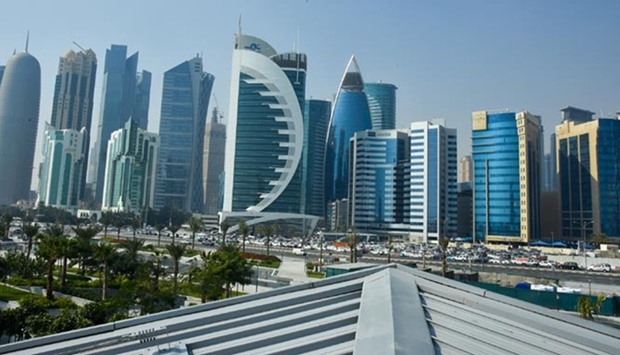Capital Intelligence (CI), the international credit rating agency, has affirmed Qatar’s long-term foreign and local currency issuer ratings at ‘AA-’ and short-term foreign and local currency ratings at ‘A1+’, while upgrading the outlook on them to "stable" from "negative".
The ratings and "stable" outlook reflect substantial improvements in the budget and current account balances in 2018, as well as CI’s expectation that the country’s fiscal and external positions will remain relatively stable in the coming years.
Qatar’s ratings continue to be primarily supported by very large hydrocarbon reserves and substantial government assets under the management of Qatar Investment Authority, the sovereign wealth fund.
The budget balance turned positive in 2018 as hydrocarbon revenues increased following a rebound in oil and gas prices, it said, adding the overall budget balance is estimated to have recorded a surplus of 3.6% of GDP (gross domestic product) compared to a deficit of 1.6% in 2017.
While CI projects a slight decline in hydrocarbon revenues in 2019 and 2020, the public finances are expected to benefit from expenditure restraint and rising non-hydrocarbon revenues following the implementation of taxes on certain goods in January 2019 (notably on tobacco, energy drinks and sugary drinks).
CI’s tax revenue forecasts do not incorporate the potential introduction of value-added-tax, which was originally scheduled for January 2018, but has been repeatedly postponed by the government. The budget balance is forecast to post an average surplus of 3.1% of GDP in 2019-20.
Highlighting that the improvement in the budget balance has helped to stabilise government debt metrics, the rating agency said gross central government debt is estimated at a moderate 53.4% of GDP against 53.8% in 2017, and is expected to edge slightly lower over the next two years.
CI considers the large size of the domestic banking sector as an important implicit contingent liability for the government, although potential risks to the public finances are currently mitigated by the strong condition of the banking sector.
It also noted that rising global oil and gas prices have also led to an increase in Qatar’s current account surplus to an estimated 7.1% of GDP in 2018 compared to 1.9% in 2017.
Hydrocarbon exports accounted for a high 79.4% of total goods exports in 2017. CI’s baseline scenario foresees a modest decline in the current account surplus to a still high average of 5.1% of GDP in 2019-20, as "we project slight declines in annual global oil prices and domestic oil production."
Despite a high current account surplus, Qatar’s gross external financing needs are projected to remain very large in 2019 (51.4% of GDP), reflecting the substantial external debt rollover needs, particularly of domestic banks, it said.
Qatar’s ratings benefit from very large hydrocarbon reserves and low domestic stability risks. It commands over 1.5% of global oil and 12.9% of global gas reserves. Due to large hydrocarbon exports and a rather small population size, GDP per capita is estimated at an extremely high $67,830 in 2018.


